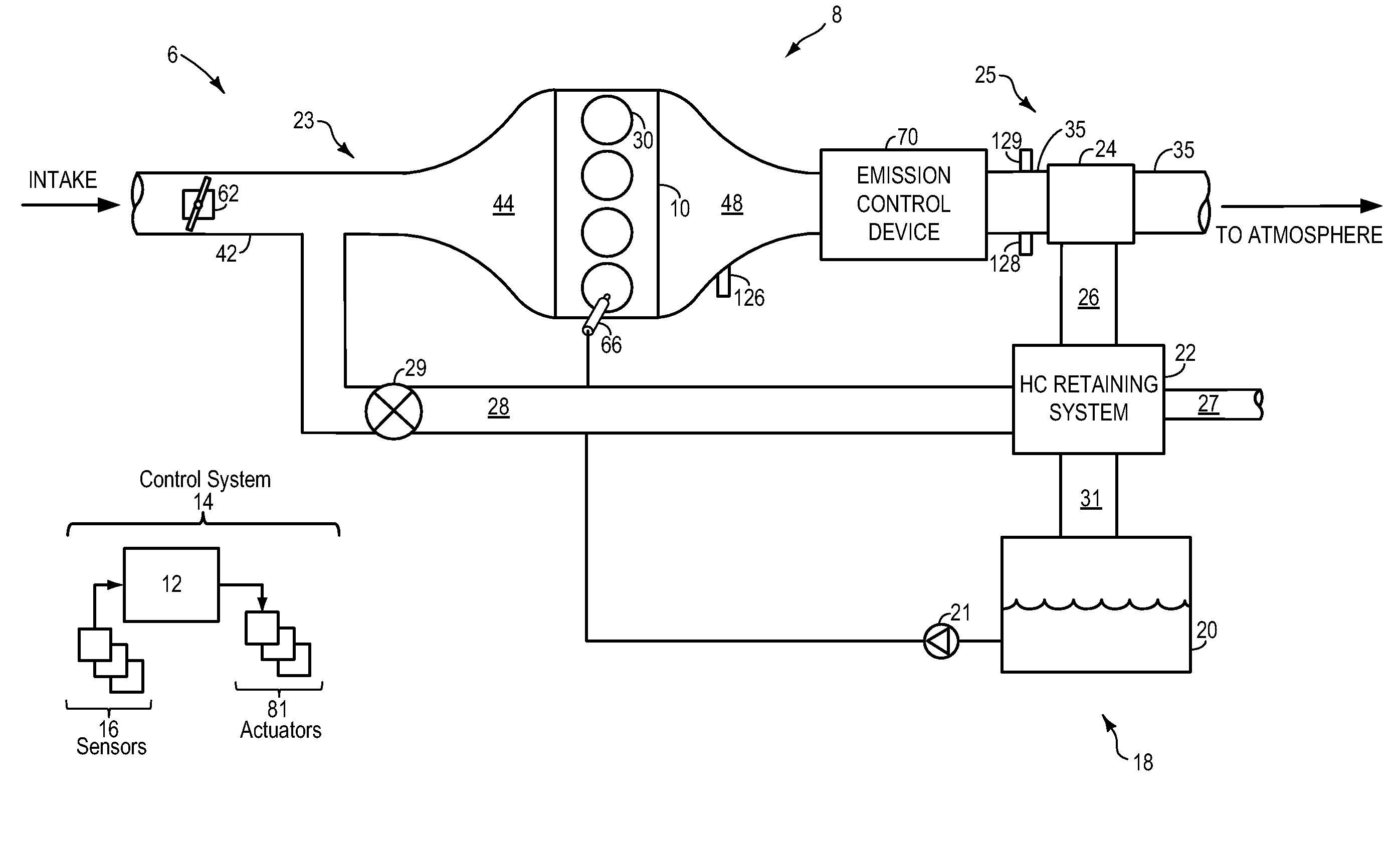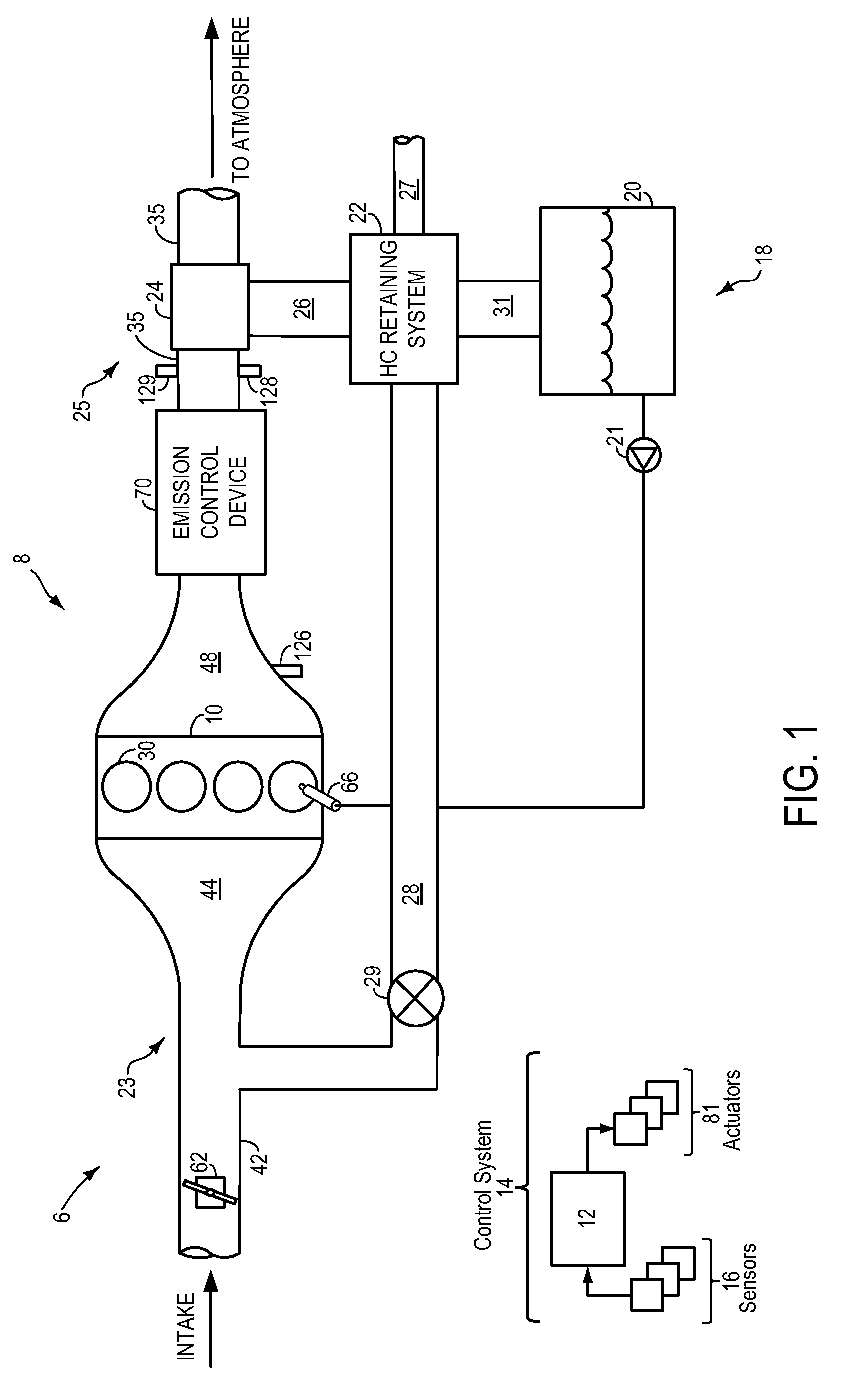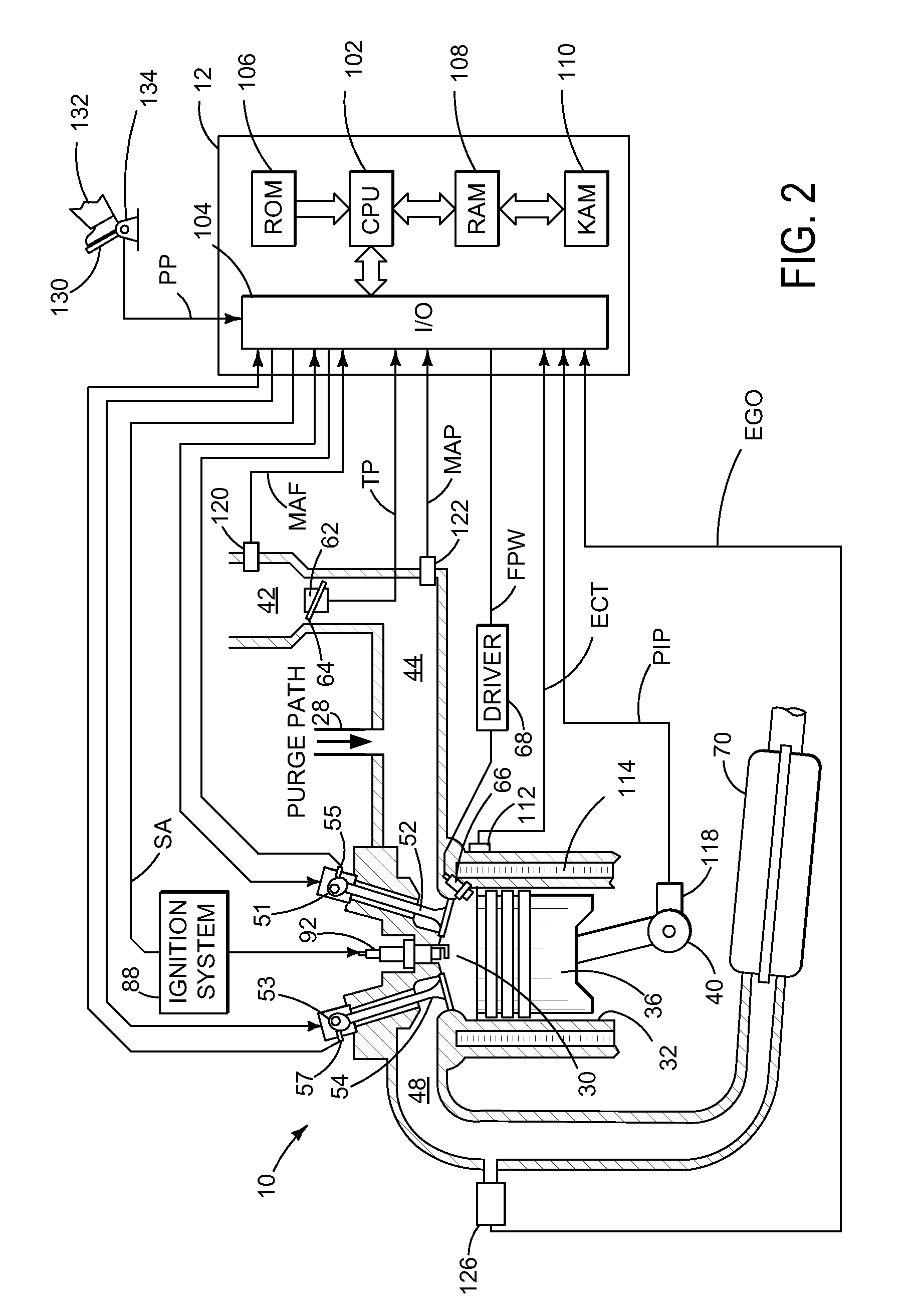Hydrocarbon Retaining System for Flex-Fuel Combustion Engine
a technology of hydrocarbon retaining system and combustion engine, which is applied in the direction of exhaust treatment electric control, combustion-air/fuel-air treatment, electrical control, etc., can solve the problems of inefficient trapping and combustion of a second fuel composition, and achieve the effect of reducing the alcohol content of fuels, reducing the breakthrough of the hydrocarbon retaining system, and high alcohol conten
- Summary
- Abstract
- Description
- Claims
- Application Information
AI Technical Summary
Benefits of technology
Problems solved by technology
Method used
Image
Examples
third embodiment
[0056]FIG. 5 shows a schematic depiction of the hydrocarbon retaining system 22. This embodiment is similar to that of FIG. 3, except that the HC trap 510 includes two bricks 520, and is configured to pass exhaust gasses serially through the bricks, but purge them in parallel. Specifically, the system of FIG. 5 includes HC trap 510 arranged in parallel with exhaust conduit 35, downstream of the emission control device 70. An exhaust conduit valve 24, which in this example may be a throttle, is located in the exhaust conduit for blocking exhaust flow during a first mode, and allowing exhaust flow to pass during a second mode. A bypass conduit 512 is coupled upstream and downstream of the exhaust conduit valve 24. Further, the bypass conduit 512 includes a first bypass valve 514, the HC trap 510, and a second bypass valve 518. The bypass conduit 512 is also coupled to vent 27 via two parallel passages 534 and valve 538.
[0057]Furthermore, the HC trap 510 is fluidly coupled to a purge c...
fourth embodiment
[0070]FIG. 7 shows a hydrocarbon retaining system 22. This example is similar to that of FIG. 4, although different valve and conduit configurations are used, along with two HC traps, in bypass 712. Specifically, in this example, valve 24 operates as a diverter valve to either allow exhaust gas flow through conduit 35 to atmosphere, or to direct the exhaust gas flow to conduit 714 and valve 716. In this example, valve 716 is another diverter valve which either allows communication between conduit 714 and conduit 740, or conduit 714 and conduit 742. Bypass 712 further includes a first and second HC trap, 726 and 728, respectively. Further still, a valve 726 is shown for controlling flow leading to, or coming from, the purge canister (not shown), which then leads to the fuel tank and intake manifold, similar to the other example configurations described above. As such, fuel vapors from the fuel tank may be routed to the first and second traps, 726 and 728, in that order, and purged in...
PUM
 Login to View More
Login to View More Abstract
Description
Claims
Application Information
 Login to View More
Login to View More - R&D
- Intellectual Property
- Life Sciences
- Materials
- Tech Scout
- Unparalleled Data Quality
- Higher Quality Content
- 60% Fewer Hallucinations
Browse by: Latest US Patents, China's latest patents, Technical Efficacy Thesaurus, Application Domain, Technology Topic, Popular Technical Reports.
© 2025 PatSnap. All rights reserved.Legal|Privacy policy|Modern Slavery Act Transparency Statement|Sitemap|About US| Contact US: help@patsnap.com



